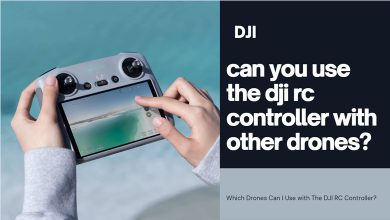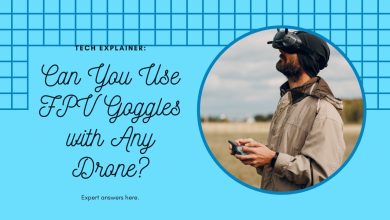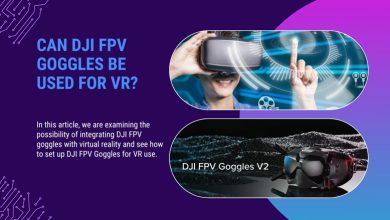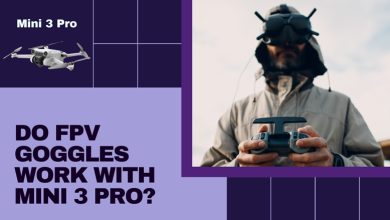Introduction and review of dji fpv
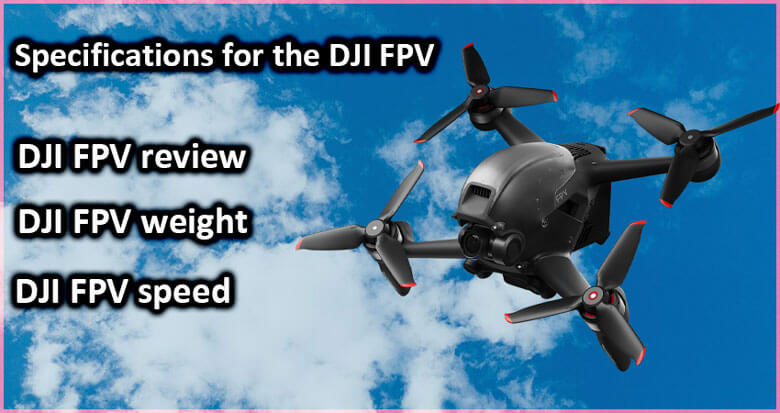
In today’s world of advancement and thrills, where excitement and speed come first, if you love the experience of joy and speed, DJI FPV series drones may be the best option for you.
Unlike previous models, the DJI FPV comes with glasses that provide first-person visibility, allowing you to experience the sensation of flying.
In reality, this innovation has two screens that constantly show pictures to the user. Like other designs of DJI drones, this quadcopter comes with equipment such as a remote controller, air unit, batteries, cables, cameras, gimbal, and other equipment.
Considering the fundamentals of this sentimental technology, we will look in-depth at the price and the various specs of the camera, weight, speed, and so on in this article.
Continue to follow us to learn about the DJI specs of this technology.
Specifications for the DJI FPV
Now that we have a thorough understanding of this gadget, we will glance at some of the specifications of the DJI FPV drone to familiarize you with it.
These requirements are as follows:
- This device comes with an air unit, a pair of glasses, a remote controller, batteries, and cables, and the air unit itself contains different parts such as cameras, locusts, gimbals, arms, etc.
- This bird has three flight modes: manual, sport, and normal, which are easily accessible via the key embedded in the back of the controller.
- The dimension of these drones is 255 * 312 * 127 mm with propellers connected and 178 * 232 * 127 mm without propellers.
- The controller’s handles are screwed together and tightened and loosened by turning them.
DJI FPV review
Following the general analysis of this broadly used technology that we conducted above, it is now time to analyze some of the determining factors of these drones, such as maximum speed and distance, and so on, which is as follows:
- A 4k video recording with a frame rate of 60 per size can provide a bit rate of approximately 120 Mbps.
- This bird’s maximum peak speed is unrestricted in manual mode, 10 m/s in sport mode, and 8 m/s in normal mode.
- Maximum landing speed is unlimited in manual mode, 10 meters per second in sport mode, and 7 meters per second in normal mode.
- This device can reach a top speed of 140 km/h. The maximum speed in manual mode is 39 m/s, 27 m/s in sport mode, and 15 m/s in normal mode.
- Ultimately, the maximum flight time for the DJI FPV drone is 20 minutes.
- These drones have a maximum suspension time of 16 minutes.
- These birds can fly a maximum distance of 16.8 kilometers.
DJI FPV weight
In this segment, we’ll look at the weight of each element of DJI FPV drone, which is as follows:
- The aircraft weighs 795 grams.
- The battery weighs 295 g.
- The glasses, such as headbands and antennas, weigh 420 grams.
- The weight of the controller is 346 grams.
- The weight of the motion control is 16 grams.
DJI FPV speed
Consider what flight mode we will put our bird in but which of the modes we discussed above we will use to fly, keeping in mind that the drone’s speed can vary.
When we put the bird in the usual way, it can reach 87 mph in less than two seconds. In sports mode, however, you can reach up to 60 mph.
Can DJI FPV be used without goggles?
As we described in this essay, DJI’s modern tech FPV is a tool that performs with special glasses, so the question of whether it can be flown and guided without goggles is quickly answered.
Because goggles are an essential component of this gadget, there must be a purpose why they named this model FPV!
It should be noted that connecting goggles to the phone is optional, and if there is no connection, there is no problem; however, to use the DJI FPV drone, glasses must be used because the bird cannot be linked the remote control and guided without goggles.
DJI FPV goggles
So far in this post, we’ve learned about several components of this gadget. In this part, we’ll look at the specs of DJI FPV goggles.
The following are the specs for these goggles:
- The measurements of these goggles are 202 * 126 * 110 mm when the antenna is included and 184 * 122 * 110 mm when the goggles are removed.
- The measurements of this drone’s screen are 2 inches by 2 inches.
- The resolution of each screen is 1440 x 810.
- The refresh rate of the screen on these goggles is 120 Hz.
- These goggles’ communication frequency is anticipated to be 5.725 to 5.850 GHz.
- The transmitter power of the goggles is specified as follows: 30 dBm for the FCC, 14 dBm for the CE, and 19 dBm for the SRRC.
- For the goggles live display mode, we will have 720 pixels/120 frames per second in the Low latency mode and 720 pixels/60 frames per second in the High-Quality option.
- These goggles have an MP4 video format.
- These goggles support MP4, MOV, and MKV video formats for playing. AAC-LC, AAC-HE, AC-3, and MP3 are also supported audio formats.
- These goggles operate at temperatures ranging from 32 to 104 degrees Fahrenheit or 0 to 40 degrees Celsius.
- The needed input voltage ranges from 7.4 to 17.6 volts.
- The viewing angle of these glasses can be adjusted from 30 to 54 degrees.
- These goggles support memory cards in the form of microSD cards up to 128 GB.
- IPD the distance between the lens’s foci on these glasses is 58 to 70 mm.
Click to continue reading: dji fpv goggles review
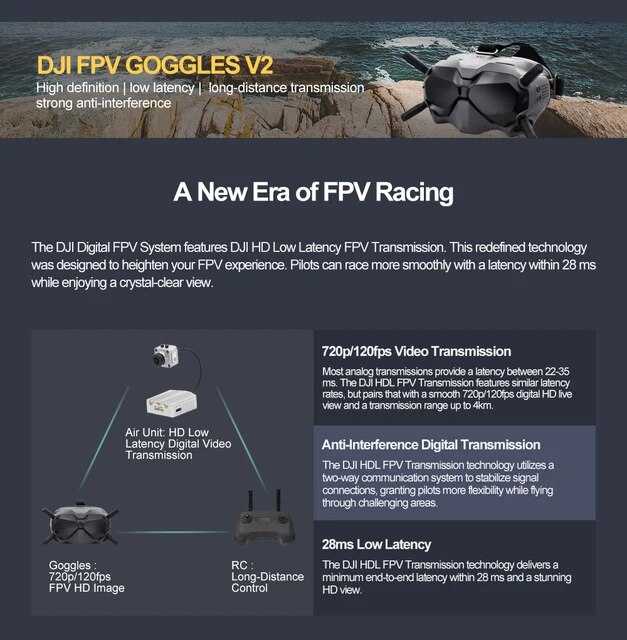
DJI FPV battery
Like the rest of the gadgets, this section will deal with the battery characteristics employed in these drones.
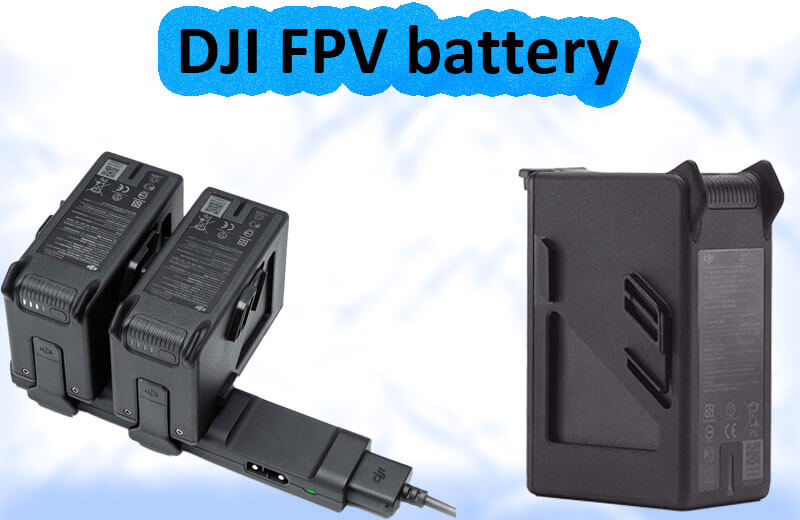
These qualities are as follows:
- This battery has 6 cells and is made of lithium polymer.
- It has a capacity of 2000 mAh.
- This battery has a voltage of 22.2 volts.
- This battery’s maximum charging voltage is 25.2 volts.
- We may charge the battery with the aid of this device’s charging hub.
- This battery has a maximum life of 20 minutes with a full charge.
- This battery has a capacity of 44.4 watts per hour.
- This normal battery has a charge-discharge rate of 10C.
- The charging temperature of the DJIFPV battery should be between 5 and 40 degrees Celsius.
- This battery’s maximum charging power is 90 watts.
- The following are the characteristics of the charger used for this battery:
- Input: 100 to 240 volts, 50/60 Hz frequency, and 1.8 amps current
- Output: The output voltage is 25.2 volts, with a high current output of 3.57 amps and a low current output of 1 amp.
- The power measured is 86 watts.
If you want more precise and complete information about this battery, go to the article about the dji fpv battery available on this website and read it.
DJI FPV camera
So far, we’ve learned a bit about this technology. Join us in this part as we present the camera and functions of these drones.
These explanations are relatively brief and serve as an introduction. If you want more detailed and specialized data in this respect, you may refer to the site’s complete page about the DJI dji fpv camera.
If you’re ready, let’s go through the DJIFPV camera’s specs together:
- The sensor utilized in these cameras is a 1 / 3.2 “CMOS sensor with 4M Efficient Pixels.
- 1 mm f/2.1 fpv camera lens specs
- This camera employs a rotating shutter. It has a speed range of 1/50 to 1/8000 s.
- Iso ranges from 100 to 25,600.
- Viewing angle: 150 ° (D); 122 ° (H); 93 ° (Designed) (V).
- This camera’s maximum picture size is 3840 x 2160.
- All photographs are in JPEG format.
- Video resolution in 4k mode is 3840×2160 with 50/60 fps frame rates, o FHD mode is 1920 * 1080 with 50/60/100/120 fps frame rates.
- The highest video bitrate is 120 Mbps.
- Standard and D-Cinelike modes are both available.
- This camera also has EIS and distortion correcting capabilities.
Read more: Dji fpv camera review and specs
DJI FPV remote controller
The controller, which enables the user to lead the bird, is one of the most significant aspects of this drone. These new remote controllers resemble PlayStation handles, making them simpler to grasp and operate the bird. To turn on the remote controller, push the power button once, press and hold the same button for a few seconds until it turns on and is ready to use. The controller weighs 346 grams and operates at a 5.725 to 5.852 GHz frequency range.
Two control sticks on the remote guide the bird and change its height and movement ahead, back, left, and right. This controller also has an antenna to increase communication, and it is best to leave it open while operating.
read more: DJI FPV remote controller setup + video
On the back of the remote controller, there is a button to change the bird’s flight modes, start filming and photography or switch from one of these modes to another or shutter, a flight adjustment or RTH button, a flight gimbal adjustment button, a start/stop button to start and stop the cruise control mode, and a C2 button that is set to use the receiver system.
| DJI FPV controller battery specs | |
| The types of battery | Polymer lithium |
| Capacity | 4920 mAh |
| Voltage | 7.6 Volt |
| Power | 37.39 Wh |
Suppose you want more precise and complete data than what is provided in this area and wish to become better acquainted with the controllers of these birds. In that case, you may refer to the site pages that specialize in evaluating the controller.
Read more: DJI FPV remote controller
DJI FPV setup
So, we’ve compiled nearly all you need to know about this gadget and its parts. As a user, you now understand what a DJ is and its components.
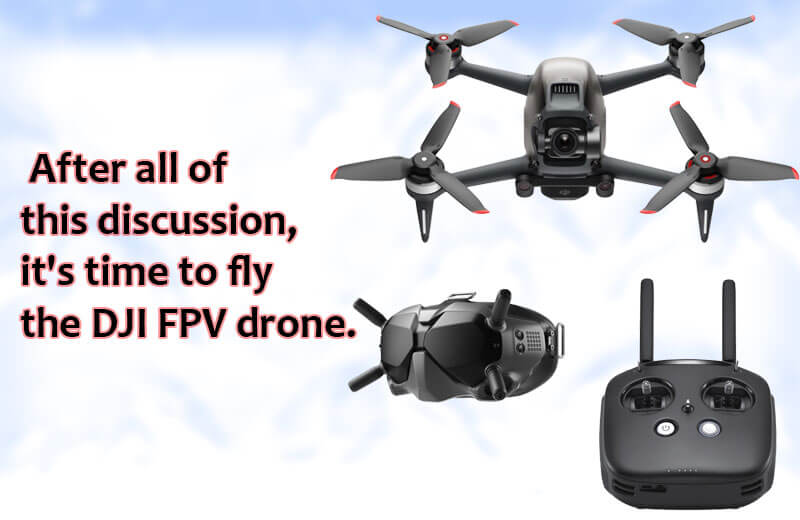
After all of this discussion, it’s time to fly the DJI FPV drone.
- First, pick up all of the parts and gadgets from the box.
- The charging hub completely charges the batteries and attach or connect to each item.
- It is conceivable that the gadget pieces, such as the goggles antenna, the bird locusts, and so on, are independent, allowing you to install each one in its proper spot.
- Ensure that the operating system on all devices is updated to the most recent version.
- Download and install the DJI fly app on your phone at this point.
- Connect your goggles to your phone using a type C connection.
- You must now sign in to your DJI account.
- If you do not have an account, you must create one.
- Now, one by one, switch on the gadgets.
- After powering up, wait for the goggles, remote control, and air unit to connect.
- Eventually, your bird is ready to take flight, and you can begin your activity.
Read more: How to DJI FPV setup?
If you have any doubts about your understanding of the startup procedure, you may utilize the extra information offered in the DJI FPV starter article to clear them up.
DJI FPV system update
The software must be upgraded to the latest edition of the present operating system to function optimally. The procedure of upgrading the DJI FPV system consists of three major phases, which are as follows:
- Updating the goggles operating system: To update the goggles operating system, switch them on and connect them to your computer using a USB Type-C cable. Run the DJI Assistant 2 program now. Select the most recent version of the operating system available by clicking Update. Wait for the procedure to finish before clicking on the Update again.
- Updating air unit operating system: To update the DJI FPV drone’s air unit or air system, first switch it on. Then, using a USB Type-C connector, connect to your computer. Launch the DJI Assistant 2 program and pick the most recently accessed update version, just like you did with the prior version. Finally, click the update button and wait for the update project to finish.
- Updating remote controller operating system: To begin, switch on the controller. Then connect it to your computer and run the DJI Assistant 2 app to update it as previously.
If you want more extensive and complete data about the DJI FPV system upgrading project, please refer to the articles on the site about updating and upgrading the utilized parts.
The last word,
As you are aware and as we discussed in this post, the world is moving towards growth and advancement, and new technologies are creating fascinating sectors for users and attracting them to the virtual world.
DJI FPV is one of these technologies which have captivated users with its unique shape and performance.
In this essay, we examined this item and attempted to introduce you to it. As we indicated in the post, you may learn more about the gadget and its components by reading other articles on the site. If you have any difficulties or queries, please leave a comment to react as soon as possible.

